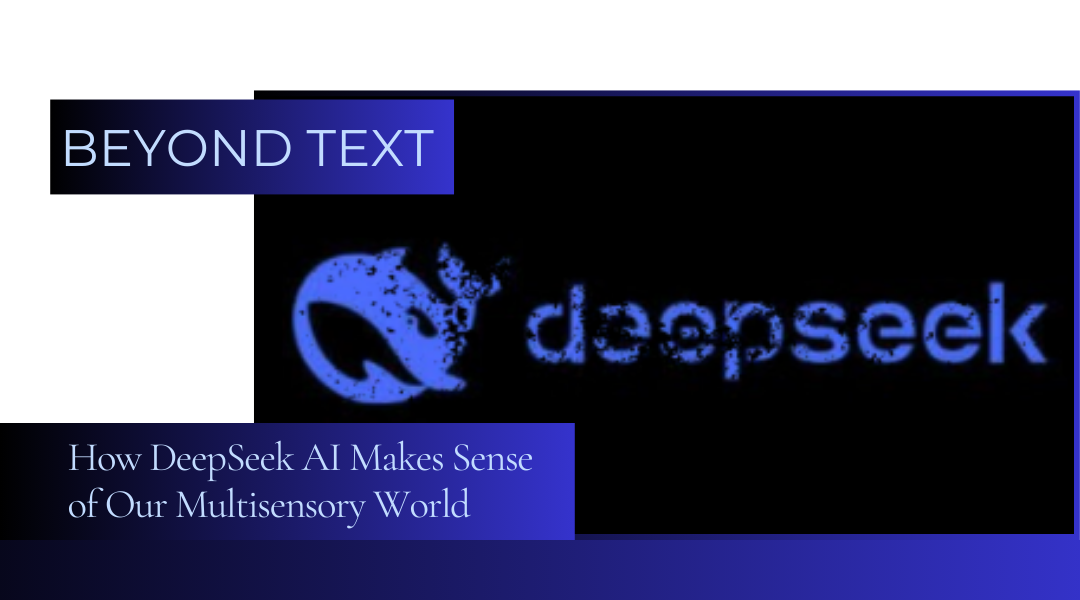We live in a rich, multisensory world. We don’t just read words; we see images, hear sounds, and watch events unfold in video. For AI to be truly helpful, it needs to understand this world the way we do—not through a single lens, but by synthesizing all these modes of information together. This is the promise of multimodal AI, and it represents a fundamental shift from single-purpose tools to more holistic, contextual digital assistants.
DeepSeek AI’s architecture isn’t just about processing different data types; it’s about weaving them into a coherent understanding. Here’s a look under the hood at how it works and why it matters.
The Symphony of Senses: How the Architecture Works
Think of a world-class conductor leading an orchestra. Each section—strings, brass, woodwinds—is a master of its own domain. But the magic happens when they all play in harmony, guided by a unified score. DeepSeek AI’s architecture operates on a similar principle.
Instead of a single, monolithic network struggling to do everything, it uses a modular approach with specialized “experts” for each type of data, all coordinated by a central system that understands how they relate.
- The Language Expert (Text): This isn’t just a simple chatbot. This module is a sophisticated reader, trained to grasp nuance, context, and intent. It can parse a complex legal document, understand the sarcasm in a social media post, and summarize a technical manual. Its strength is in reasoning and generating human-like language.
- The Visual Expert (Images): Built on advanced convolutional neural networks (CNNs), this module is like a hyper-observant art critic and detective combined. It doesn’t just see a picture; it deconstructs it. It can identify a specific breed of dog in a photo, detect the subtle wear and tear on a piece of industrial machinery from an uploaded image, or describe the emotional tone of a painting based on its colors and composition.
- The Auditory Expert (Audio): This component is a trained ear. It can transcribe speech with high accuracy even in noisy environments, distinguish between a customer’s frustrated tone and a satisfied one in a support call, and identify a song playing in the background of a video. It turns sound into structured, actionable data.
- The Temporal Expert (Video): Video is more than just a series of images; it’s about understanding motion and time. This expert can track an object’s path, identify specific actions (like a person tripping or a car running a red light), and summarize the key events in a long recording. It understands stories as they unfold.
The true innovation is the fusion engine—the “conductor” of this orchestra. It doesn’t just process these streams in parallel; it lets them talk to each other. It understands that the word “jaguar” in a text caption could refer to the animal in the accompanying image or the car in the video, and it uses context from each modality to resolve the ambiguity.
Why This Matters: Moving From Commands to Conversations
This architectural shift changes how we interact with technology. It moves us from rigid, command-based interfaces to fluid, contextual conversations.
Real-World Magic, Not Just Hype:
- The Creative Partner: Imagine a designer asking, “Find me images of misty, ancient forests that evoke a mood of mystery.” The AI uses its visual expert to find the images and its language expert to understand the poetic, subjective request. It can then generate a new piece of concept art that combines elements from those images, all based on a conversational prompt.
- The Proactive Guardian: In an industrial setting, a system could continuously analyze live video feed from the factory floor (Visual + Temporal expert) while simultaneously monitoring audio from the same area for the sound of grinding metal or breaking glass (Auditory expert). If both modalities detect anomalies, the system doesn’t just alert a human—it cross-references the event with maintenance logs (Text expert) to suggest the most likely cause and the correct emergency protocol, all within seconds.
- The Accessible Interface: For a user with a disability, multimodality is transformative. Someone could upload a diagram (Image), ask a complex question about it (Text), and receive an answer as an audio summary (Audio). The AI seamlessly translates information across formats based on the user’s needs.
The Road Ahead: Context is the Next Frontier
The current state of multimodal AI is like giving a machine five senses. The next leap is giving it memory and context—the ability to remember past interactions and build a persistent understanding of a user’s world.
The future isn’t just an AI that can see a picture; it’s an AI that remembers you showed it a picture of your dog last week, and when you ask “Book a vet appointment for him,” it knows who “him” is and can cross-reference your calendar to suggest a time.
Conclusion: Building AI That Understands Our World
DeepSeek AI’s multimodal approach is more than a technical achievement; it’s a philosophical one. It acknowledges that human intelligence is not segmented. Our understanding comes from a constant, subconscious fusion of what we see, hear, and read.
By building systems that mirror this holistic processing, we’re not just creating smarter tools; we’re creating more intuitive and natural bridges between humans and machines. This architecture paves the way for AI that doesn’t just execute commands but truly understands context, leading to assistants that are less like calculators and more like collaborative partners. The goal is no longer to build AI that can beat humans at a single game, but to build AI that can better understand and augment the human experience in all its rich, messy, and multimodal glory.
